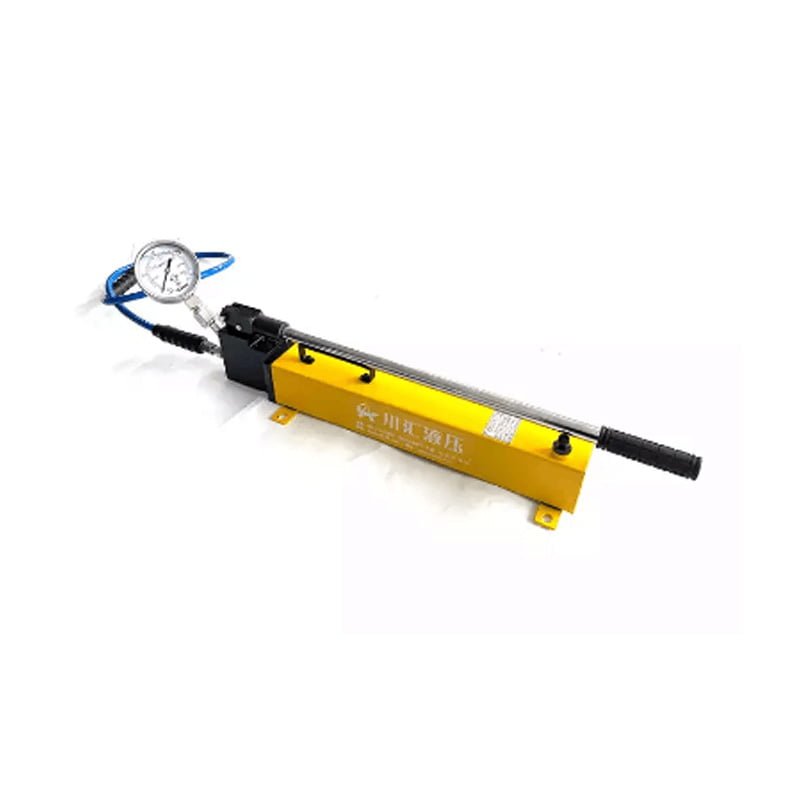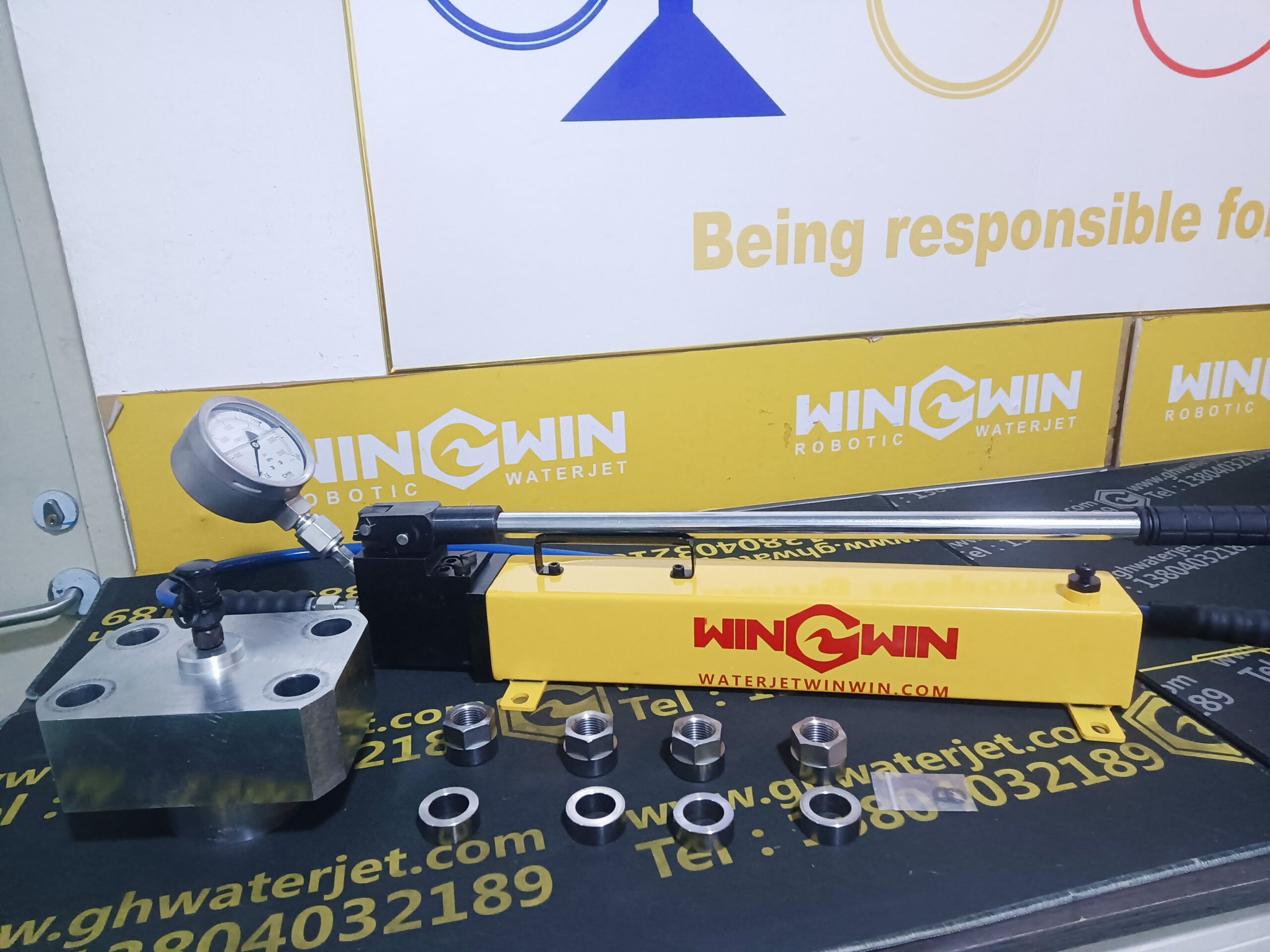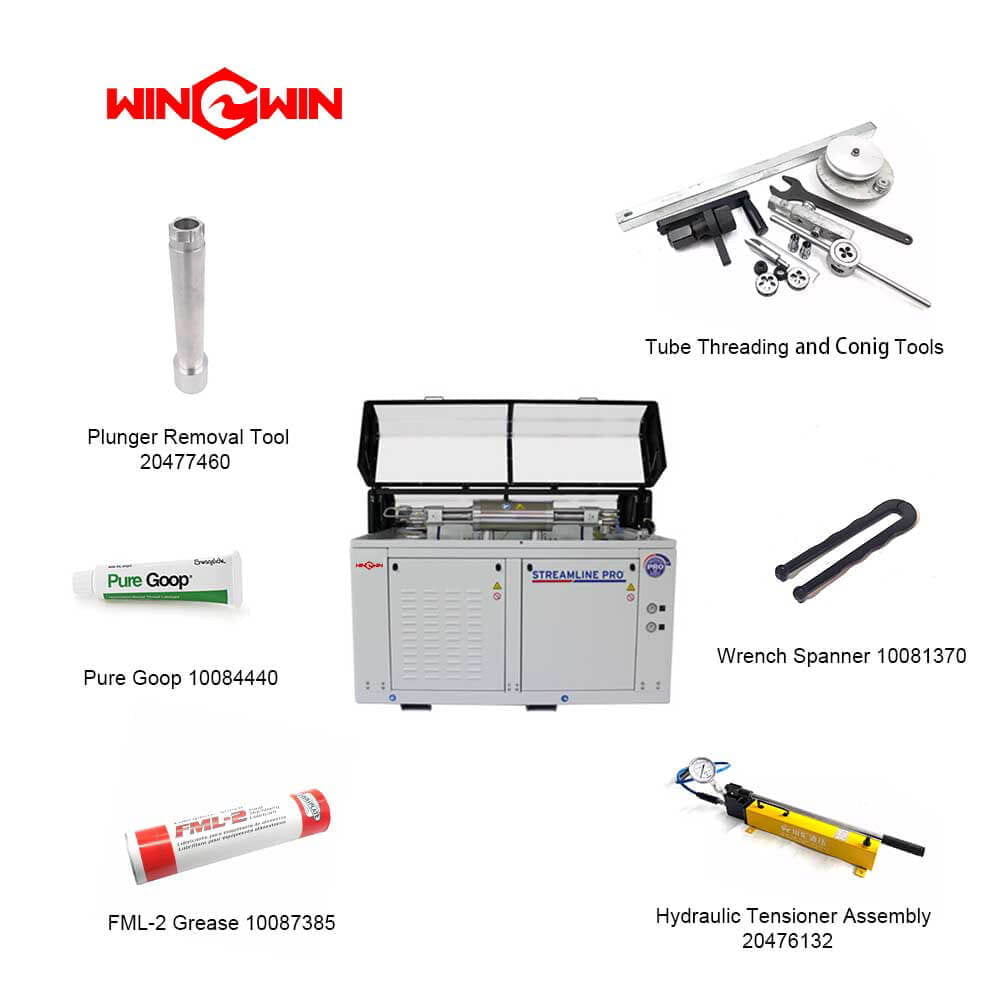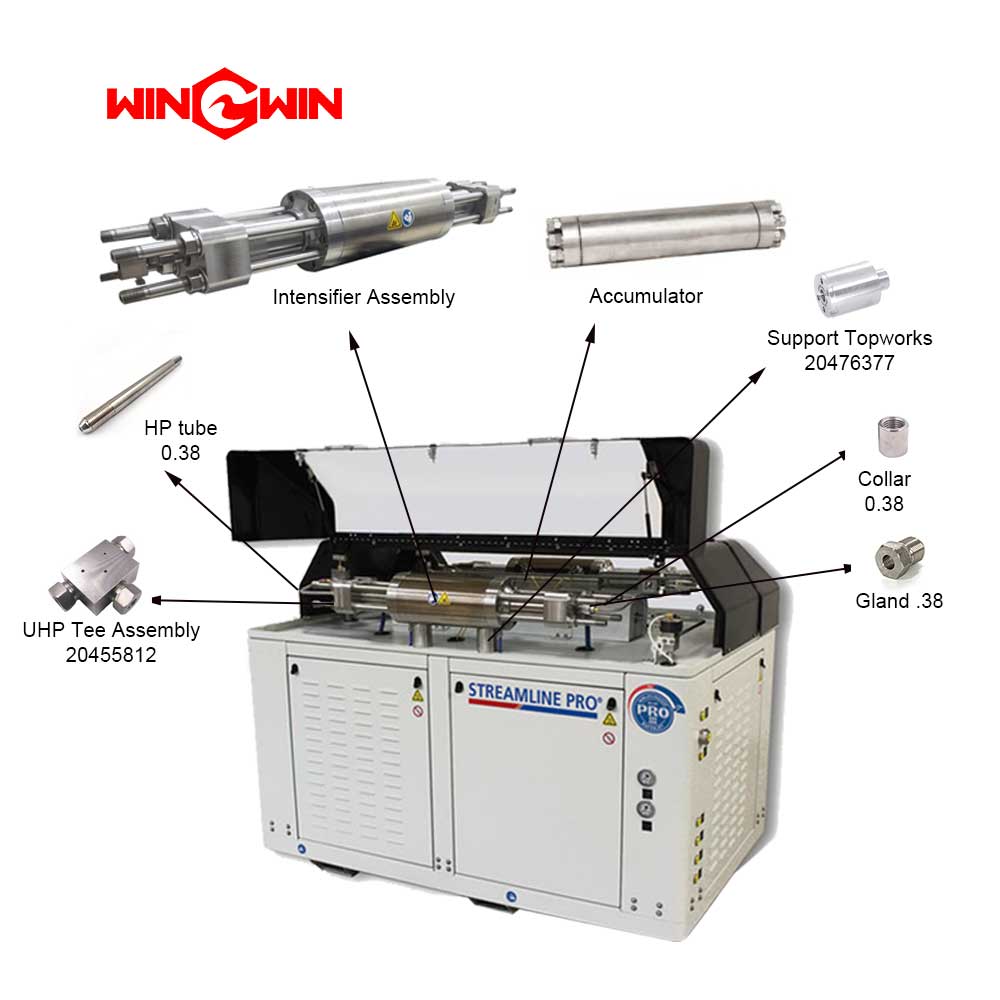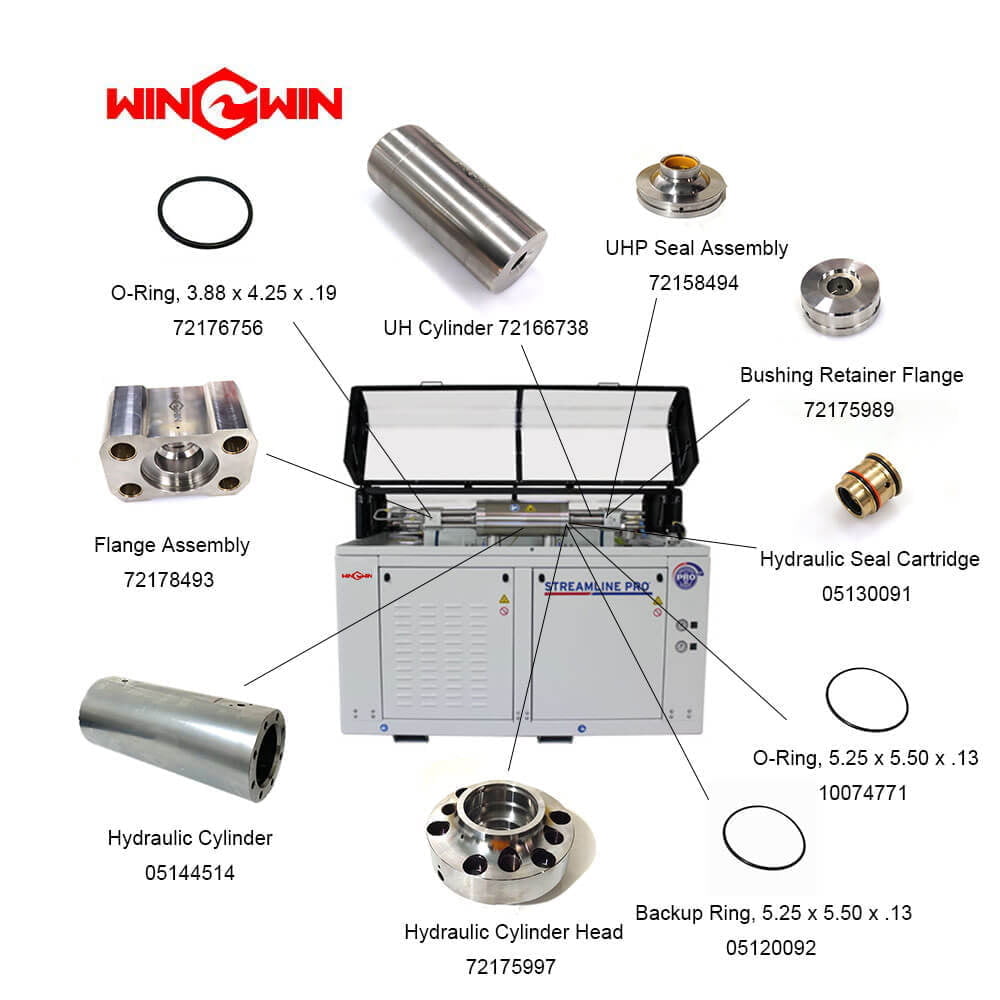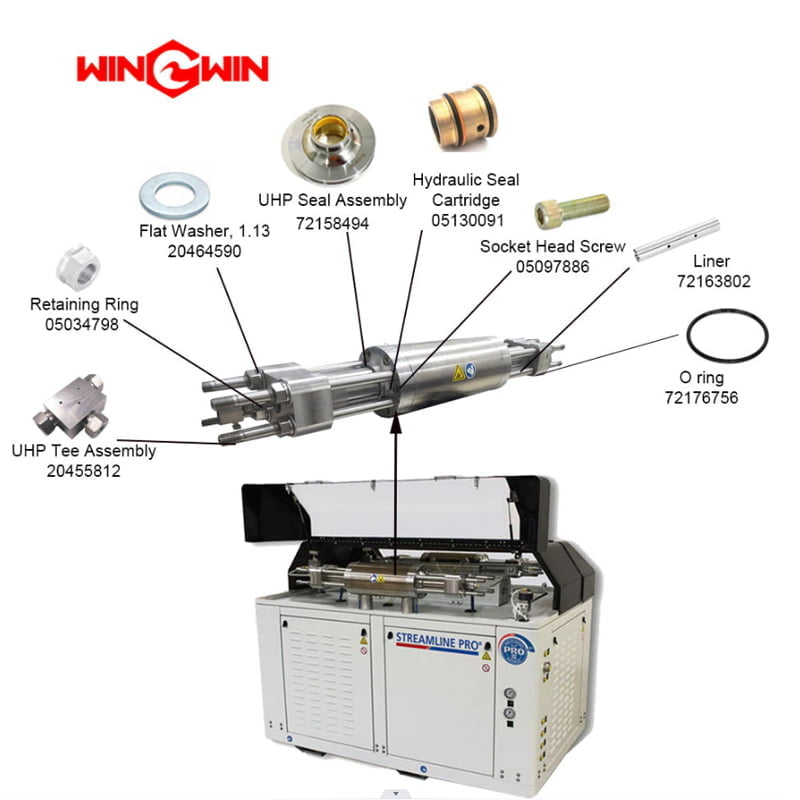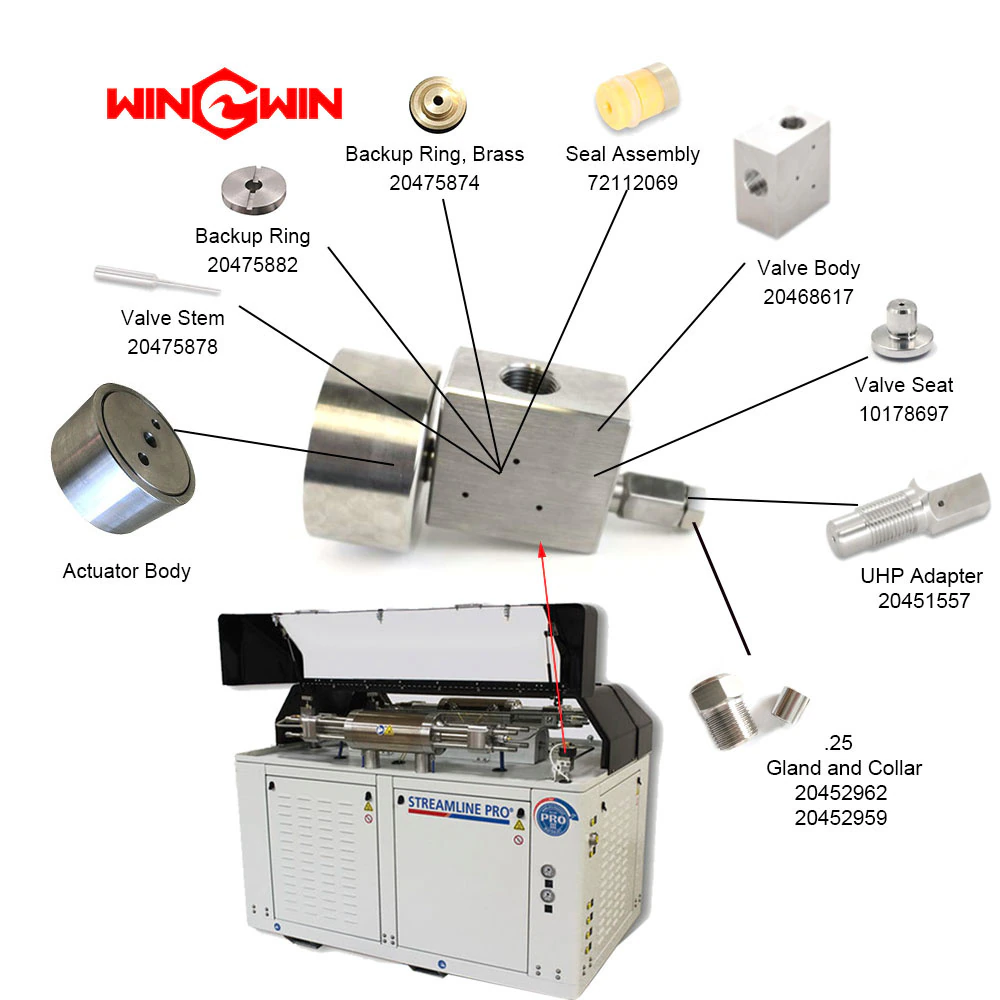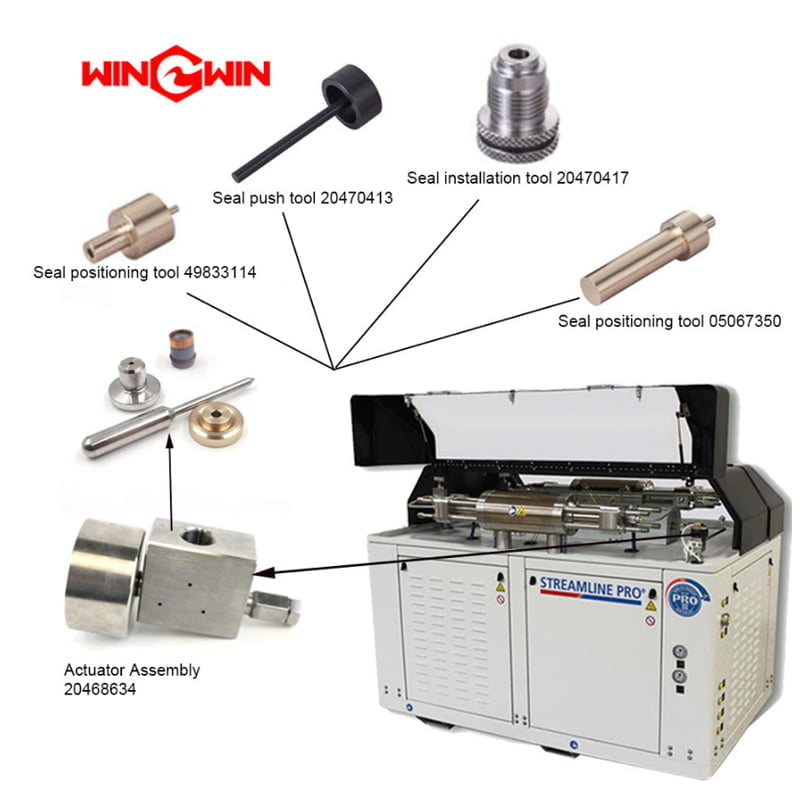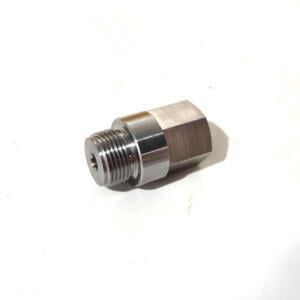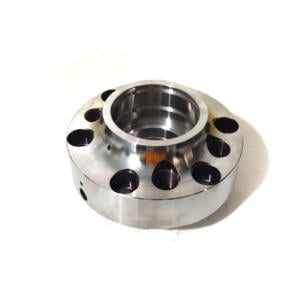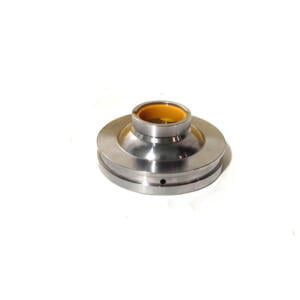Description
90K Hydraulic Tensioning Tool: Hydraulic Tensioner Assembly 20476132

The Hydraulic Tensioner Assembly 20476132 is a specialized hydraulic tensioning tool used in 90k waterjet pumps to maintain proper tension on the plunger assembly.
The plunger assembly is a critical component of the pump, responsible for creating the high-pressure water stream that is used for cutting or cleaning.
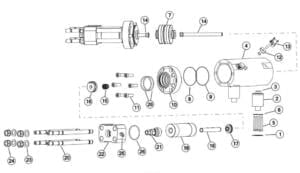
Article | Numéro de pièce | Description | Quantité | Article | Numéro de pièce | Description | Quantité |
1 | 05146592 | Joint d’étanchéité, Topworks Support | 2 | 14 | 72162253 | Ventouse | 2 |
2 | 20476377 | Soutien, Topworks | 2 | 15 | 05130091 | Cartouche de joint hydraulique | 2 |
3 | 10118206 | Joint torique, 1.31×1.56× .13 | 2 | 16 | 72175989 | Bride de retenue de bague | 2 |
4 | 05144514 | Vérin hydraulique | 1 | 17 | 72158494 | Assemblage de joints UHP | 2 |
5 | 05098991 | Vis à tête creuse, 3/8-16×3-3/4 | 8 | 18 | 72166738 | Cylindre UHP | 2 |
6 | 95688743 | Rondelle de blocage, .38 | 8 | 19 | 72163802 | Paquebot | 2 |
7 | 72101190 | Assemblage du piston | 1 | 20 | 20474325 | Goujon, 1-1/8-12×18.31 | 8 |
8 | 10074771 | Joint torique, 5.25×5.50× .13 | 2 | 21 | 72170157 | Assemblage de la tête de scellage | 2 |
9 | 05120092 | Anneau de secours, 5.25×5.50× .13 | 2 | 22 | 72178493 | Assemblage de brides | 2 |
10 | 72175997 | Culasse hydraulique | 2 | 23 | 20464590 | Rondelle plate, 1.13 | 8 |
11 | 05097886 | Vis à tête creuse, 3/4-16×2-1/4 | 12 | 24 | 20461761 | Écrou hexagonal, 1-1/8-12 | 8 |
12 | 05144183 | Ensemble d’entretoise, interrupteur de proximité | 2 | 25 | 20489339 | Adaptateur, JIC/Tuyau, 50× .38 | 1 |
05144191 | Joint torique, .69× .88× .09 | 26 | 72176756 | Joint torique, 3,88×4,25× .19 | 6 | ||
13 | 72141569 | Kit, Détecteur de proximité | 2 | ||||
| 72134224 | Commutateur de proximité | ||||||
95119012 | Vis à tête creuse, 1/4-20×1 |
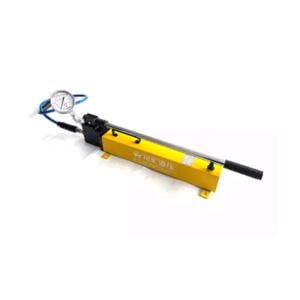
– Design: The Hydraulic Tensioner Assembly typically consists of a hydraulic cylinder, pressure gauge, and other hydraulic tensioning tool components as needed.
The hydraulic cylinder is used to apply force to the plunger assembly, maintaining the correct tension and alignment.
The pressure gauge allows the operator to monitor the tension and adjust it as needed.
– Material: The hydraulic tensioning tool components of the Hydraulic Tensioner Assembly are typically made from high-strength materials such as steel or aluminum.
It can withstand the forces involved in the pump system.
The assembly must also be resistant to wear and corrosion from the water and abrasive particles.
– Compatibility: It’s important to ensure that the Hydraulic Tensioner Assembly is compatible with the specific model of waterjet pump being used.
The assembly must be designed to work with the mounting points and other hydraulic tensioning tool components of the pump.
And it must be able to apply the necessary force to maintain the correct tension on the plunger assembly.
Using an incompatible assembly could lead to damage to thepump or the assembly itself.
– Installation: To use the Hydraulic Tensioner Assembly, it is typically installed onto the pump and adjusted to the correct tension using the pressure gauge.
The assembly is then secured in place, maintaining the correct tension on the plunger assembly.
Installing the Hydraulic Tensioner Assembly requires careful attention to detail to ensure that it is properly aligned and secured in place.
Improper installation could cause the assembly to come loose or fail to maintain the correct tension on the plunger assembly, leading to damage or malfunction of the pump.
– Performance: The Hydraulic Tensioner Assembly plays a critical role in ensuring the safe and efficient operation of the waterjet pump.
Proper tension on the plunger assembly is necessary to maintain the correct alignment and prevent damage to the pump components.
Regular inspection and maintenance of the assembly can help ensure that it is performing properly and prevent issues from arising.
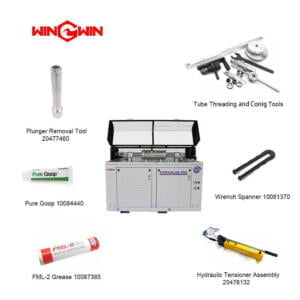
Overall, the Hydraulic Tensioner Assembly 20476132 is an important hydraulic tensioning tool in 90,000 psi waterjet pumps, helping to maintain proper tension on the plunger assembly and ensure the safe and efficient operation of the pump.
Proper maintenance and inspection of the Hydraulic Tensioner Assembly is important to ensure its continued reliability and performance.
Over time, the components of the assembly may become worn or damaged, which could compromise its ability to maintain the correct tension on the plunger assembly.
Regular inspection and replacement of worn or damaged components can help prevent these problems and ensure the safe and efficient operation of the pump.
What are the common signs of wear and tear on the hydraulic tensioning tool Hydraulic Tensioner Assembly?
1. Leaking oil
If you notice oil leaking from the hydraulic tensioner assembly, it may because the seals or gaskets are worn or damaged.
This can cause the tensioner to lose pressure and not be able to maintain the proper tension on the timing belt or chain.
If left unaddressed, this can damage other parts and lead to engine failure.
To resolve this issue, the seals or gaskets should be replaced immediately.
2. Noisy operation
Unusual noises from the hydraulic tensioner assembly can indicate that the tensioner is worn or damaged.
This can cause the hydraulic tensioning tool tensioner to not operate properly, leading to damage to other components or engine failure.
To resolve this issue, the tensioner or other worn components should be replaced.
3. Reduced tension
Reduced tension on the timing belt or chain can cause it to slip or jump, leading to damage to other components or engine failure.
This can occur if the hydraulic tensioner assembly is worn or damaged and is not able to maintain the proper tension.
4. Excessive vibration
If the hydraulic tensioner assembly is vibrating excessively, it may be a sign that the hydraulic tensioning tool tensioner is not operating properly.
5. Difficulty in starting
If the machine is having difficulty starting, it may be due to wear or damage to the hydraulic tensioner assembly.
The tensioner plays a critical role in maintaining proper timing and synchronization of the machine’s components, and any issues with the tensioner can cause difficulty in starting or prevent the machine from starting altogether.
6. Visible wear or damage
If you notice any visible signs of wear or damage on the hydraulic tensioner assembly, such as cracks or deformation, it is a sign that the tensioner needs to be replaced.
Visible wear or damage can indicate that the tensioner is no longer able to function properly, which can cause damage to other components and compromise the safety and reliability of the machine.
Any other requirements for the hydraulic tensioning tool, please Consultez-nous.

